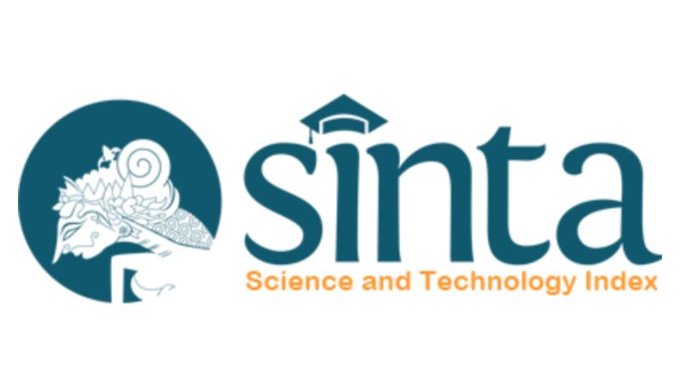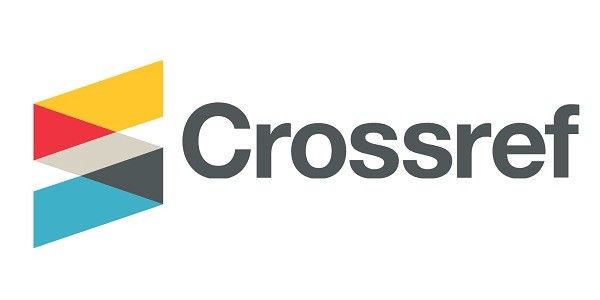Diagnosis dan Terapi Non-farmakologis pada Hipertensi
DOI:
https://doi.org/10.55175/cdk.v50i6.624Keywords:
Terapi Non-Farmakologis, Hipertensi, hipertensiAbstract
Pada tahun 2019, hipertensi diderita oleh 1,28 milyar jiwa di seluruh dunia dan diperkirakan terus meningkat setiap tahun. Saat ini, hipertensi masih menjadi salah satu penyebab utama morbiditas dan mortalitas global. Terdapat perubahan paradigma diagnosis hipertensi menjadi lebih direkomendasikan dengan pemeriksaan tekanan darah di luar klinik (out-of-office blood pressure measurement) berupa pemeriksaan tekanan darah ambulatoar (PTDA) jika fasilitas memadai atau pemeriksaan tekanan darah di rumah (PTDR) pada fasilitas lebih terbatas. Manajemen pasien hipertensi berfokus pada kontrol tekanan darah untuk meningkatkan kualitas hidup serta menurunkan angka kecacatan dan kematian dengan terapi farmakologis dan non-farmakologis. Terapi non-farmakologis telah terbukti membantu mengontrol tekanan darah, menurunkan morbiditas dan mortalitas, baik individu hipertensi maupun individu normal.
In 2019, hypertension was suffered by 1.28 billion people worldwide and is expected to increase every year. Hypertension is still one of the main causes of global morbidity and mortality. There is a paradigm shift that diagnosis of hypertension is more recommended by out-of-office blood pressure measurement. Blood pressure measurements outside clinic can be done with ambulatory blood pressure or home blood pressure in limited facilities. Management of hypertensive patients focuses on blood pressure control with pharmacological and non-pharmacological method to improve quality of life, as well as to reduce morbidity and mortality. Non-pharmacological approach has been proven to optimize blood pressure control, to reduce morbidity and mortality in both hypertensive and normal individuals.
Downloads
References
Unger T, Borghi C, Charchar F, Khan NA, Poulter NR, Prabhakaran D, et al. 2020 International Society of Hypertension Global Hypertension Practice Guidelines. Hypertension. 2020;75(6):1334–57.
Salles GF, Reboldi G, Fagard RH, Cardoso CRL, Pierdomenico SD, Verdecchia P, et al. Prognostic effect of the nocturnal blood pressure fall in hypertensive patients: The ambulatory blood pressure collaboration in patients with hypertension (ABC-H) meta-analysis. Hypertension. 2016;67(4):693–700.
NCD Risk Factor Collaboration. Worldwide trends in hypertension prevalence and progress in treatment and control from 1990 to 2019: A pooled analysis of 1201 population-representative studies with 104 million participants. Lancet 2021;398(10304):957-980.
Mills KT, Bundy JD, Kelluy TN, Reed JE, Kearney PM, Reynolds K, et al. Global disparities of hypertension prevalence and control: A systematic analysis of population-based studies from 90 countries. Circulation 2016;134(6):441–50.
Williams B, Mancia G, Spiering W, Rosei EA, Azizi M, Burnier M. 2018 ESC/ESH guidelines for the management of arterial hypertension. Vol. 39. Eur Heart J. 2018;39(33):3021-104.
Saputra PBT, Izzati N, Rosita PE, Trilistyoati D, Isyroqiyyah NM, Hasna IH, et al. National health insurance based telemedicine application for hypertension management in primary level of health facilities. J Community Med Public Heal Res. 2021;2(1):32.
Stergiou GS, Parati G, Mancia G. Home blood pressure Monitoring [Internet]. 1st ed. Mancia G, Rosei EA, editors. Switzerland: Springer; 2022.
Forman JP, Stampfer MJ, Curhan GC. Diet and lifestyle risk factors associated with incident hypertension in women. JAMA. 2009;302(4):401–11.
Mancia G, Fagard R, Narkiewicz K, Redon J, Zanchetti A, Böhm M, et al. 2013 ESH/ESC guidelines for the management of arterial hypertension: The Task Force for the management of arterial hypertension of the European Society of Hypertension (ESH) and of the European Society of Cardiology (ESC). Eur Heart J. 2013;34(28):2159–219.
Folkow B, Simon G. Pathogenesis of structural vascular changes in hypertension (multiple letters). J Hypertens. 2004;22(6):1231–4
He FJ, Li J, Macgregor GA. Effect of longer-term modest salt reduction on blood pressure: Cochrane systematic review and meta-analysis of randomised trials. BMJ. 2013;346:1325.
Strazzullo P, D’Elia L, Kandala NB, Cappuccio FP. Salt intake, stroke, and cardiovascular disease: Meta-analysis of prospective studies. BMJ. 2009;339(7733):1296.
Appel LJ, Brands MW, Daniels SR, Karanja N, Elmer PJ, Sacks FM. Dietary approaches to prevent and treat hypertension: A scientific statement from the American Heart Association. Hypertension. 2006;47(2):296–308.
Graudal NA, Hubeck-Graudal T, Jürgens G. Effects of low-sodium diet vs. high-sodium diet on blood pressure, renin, aldosterone, catecholamines, cholesterol, and triglyceride (cochrane review). Am J Hypertens. 2012;25(1):1–15.
He FJ, MacGregor GA. How far should salt intake be reduced? Hypertension. 2003;42(6):1093–9.
Fu J, Liu Y, Zhang L, Zhou L, Li D, Quan H, et al. Nonpharmacologic interventions for reducing blood pressure in adults with prehypertension to established hypertension. J Am Heart Assoc. 2020;9(19):016804.
Verma N, Rastogi S, Chia YC, Siddique S, Turana Y, Cheng H min, et al. Non-pharmacological management of hypertension. J Clin Hypertens. 2021;23(7):1275–83.
Sarkkinen ES, Kastarinen MJ, Niskanen TH, Karjalainen PH, Venäläinen TM, Udani JK, et al. Feasibility and antihypertensive effect of replacing regular salt with mineral salt -rich in magnesium and potassium- in subjects with mildly elevated blood pressure. Nutr J. 2011;10(1):1–9.
Zhao X, Yin X, Li X, Yan LL, Lam CT, Li S, et al. Using a low-sodium, high-potassium salt substitute to reduce blood pressure among Tibetans with high blood pressure: A patient-blinded randomized controlled trial. PLoS One. 2014;9(10):110131.
O’Donnell M, Mente A, Rangarajan S, McQueen MJ, Wang X, Liu L, et al. Urinary sodium and potassium excretion, mortality, and cardiovascular events. N Engl J Med. 2014;371(7):612–23.
Byun SS, Mayat ZK, Aggarwal B, Parekh N, Makarem N. Quantity, quality, and timing of carbohydrate intake and blood pressure. Curr Nutr Rep. 2019;8(3):270–80.
Li Q, Liu C, Zhang S, Li R, Zhang Y, He P, et al. Dietary carbohydrate intake and new-onset hypertension: A nationwide cohort study in China. Hypertension. 2021;78(2):422–30.
Campos V, Tappy L, Bally L, Sievenpiper JL, Lê KA. Importance of carbohydrate quality: What does it mean and how to measure it? J Nutr. 2022;152(5):1200–6.
Liu J, Rehm CD, Shi P, McKeown NM, Mozaffarian D, Micha R. A comparison of different practical indices for assessing carbohydrate quality among carbohydrate-rich processed products in the US. PLoS One 2020;15(5):1–16.
Cicero AFG, Grassi D, Tocci G, Galletti F, Borghi C, Ferri C. Nutrients and nutraceuticals for the management of high normal blood pressure: An evidence-based onsensus document. High Blood Press Cardiovasc Prev. 2019;26(1):9–25.
Toledo E, Alonso Á, Martínez-González MÁ. Differential association of low-fat and whole-fat dairy products with blood pressure and incidence of hypertension. Curr Nutr Rep. 2012;1(4):197–204.
McGuire S. U.S. Department of Agriculture and U.S. Department of Health and Human Services, Dietary Guidelines for Americans, 2010. 7th ed. Washington, DC: U.S. Government Printing Office, January 2011. Adv Nutr. 2011;2(3):293–4.
Bonow R, Mann D, Zipes D, Libby P. Braunwald’s heart disease: A textbook of cardiovascular medicine. Philadelphia: Saunders Elsevier; 2012.
Berry JD, Dyer A, Cai X, Garside DB, Ning H, Thomas A, et al. Lifetime risks of cardiovascular disease. N Engl J Med. 2012;366(4):321–9.
Menotti A, Kromhout D, Blackburn H, Difanza F, Buzina R, Nissinen A. Food intake patterns and 25-year mortality from coronary heart disease: Cross-cultural correlations in the seven countries study. Eur J Epidemiol. 1999;15(6):507–15.
Krohmut D, Menotti A, Bloemberg B, Aravavanis C, Blackburn H, Buzina R. Dietary saturated and trans FAs and cholesterol and 25 year mortality from CHD.pdf. Prev Med (Baltim). 1995;24:308–15.
Davis C, Bryan J, Hodgson J, Murphy K. Definition of the mediterranean diet: A literature review. Nutrients 2015;7(11):9139–53.
Núñez-Córdoba JM, Valencia-Serrano F, Toledo E, Alonso A, Martínez-González MA. The Mediterranean diet and incidence of hypertension: The Seguimiento Universidad de Navarra (SUN) study. Am J Epidemiol. 2009;169(3):339–46.
Doménech M, Roman P, Lapetra J, García De La Corte FJ, Sala-Vila A, De La Torre R, et al. Mediterranean diet reduces 24-hour ambulatory blood pressure, blood glucose, and lipids: One-year randomized, clinical trial. Hypertension 2014;64(1):69–76.
Ding M, Bhupathiraju SN, Satija A, Van Dam RM, Hu FB. Long-term coffee consumption and risk of cardiovascular disease: A systematic review and a dose-response meta-analysis of prospective cohort studies. Circulation 2014;129(6):643–59.
Li G, Zhang Y, Thabane L, Mbuagbaw L, Liu A, Levine MAH, et al. Effect of green tea supplementation on blood pressure among overweight and obese adults: A systematic review and meta-analysis. J Hypertens. 2015;33(2):243–54.
Greyling A, Ras RT, Zock PL, Lorenz M, Hopman MT, Thijssen DHJ, et al. The effect of black tea on blood pressure: A systematic review with metaanalysis of randomized controlled trials. PLoS One 2014;9(7):1–9.
Ried K, Fakler P, Stocks NP. Effect of cocoa on blood pressure (Review). Cochrane Database Syst Rev. 2017;4(4):CD008893.
Malinowski B, Zalewska K, Węsierska A, Sokołowska MM, Socha M, Liczner G, et al. Intermittent fasting in cardiovascular disorders—An overview. Nutrients 2019;11(3):1–18.
Erdem Y, Özkan G, Ulusoy Ş, Arıcı M, Derici Ü, Şengül Ş, et al. The effect of intermittent fasting on blood pressure variability in patients with newly diagnosed hypertension or prehypertension. J Am Soc Hypertens. 2018;12(1):42–9.
Aksungar FB, Topkaya AE, Akyildiz M. Interleukin-6, C-reactive protein and biochemical parameters during prolonged intermittent fasting. Ann Nutr Metab. 2007;51(1):88–95.
Rusmevichientong P, Nguyen H, Morales C, Jaynes J, Wood MM. Food choices and hypertension among rural thais: Evidence from a discrete choice experiment. Int J Public Health. 2022;67(July):1–10.
Rasyid S. Fiqih Islam. Jakarta: Sinar Baru Algesindo; 1936.
Hall JE, De Carmo JM, Silva AA, Wang Z, Hall ME. Obesity-induced hypertension: Interaction of neurohumoral and renal mechanism. Circ Res. 2015;116(6):991–1006.
Neter JE, Stam BE, Kok FJ, Grobbee DE, Geleijnse JM. Influence of weight reduction on blood pressure: A meta-analysis of randomized controlled trials. Hypertension 2003;42(5):878–84.
Prospective Studies Collaboration. Body-mass index and cause-specific mortality in 900 000 adults: Collaborative analyses of 57 prospective studies. Lancet 2009;373(9669):1083–96.
Harbuwono DS, Tahapary DL, Tarigan TJE, Yunir E. New proposed cut-off of waist circumference for central obesity as risk factor for diabetes mellitus: Evidence from the Indonesian Basic National Health Survey. PLoS One. 2020;15(11):e0242417..
Murtaugh MA, Beasley JM, Appel LJ, Guenther PM, McFadden M, Greene T, et al. Relationship of sodium intake and blood pressure varies with energy intake: Secondary analysis of the DASH (Dietary Approaches to Stop Hypertension)-sodium trial. Hypertension. 2018;71(5):858–65.
Leitzmann MF, Park Y, Blair A, Ballard-Barbash R, Mouw T, Hollenbeck AR, et al. Physical activity recommendations and decreased risk of mortality. Arch Intern Med. 2007;167(22):2453–60.
Rossi A, Dikareva A, Bacon SL, Daskalopoulou SS. The impact of physical activity on mortality in patients with high blood pressure: A systematic review. J Hypertens. 2012;30(7):1277–88.
Iqbal S, Klammer N, Ekmekcioglu C. The effect of electrolytes on blood pressure: A brief summary of meta-analyses. Nutrients 2019;11(6):1362.
Saputra PBT, Yolanda S, Purwati DD, Sulistiawati S. The roles of social media in hypertension management programs. Cermin Dunia Kedokt. 2022;49(8):469–73.
Kotseva K, Wood D, De Bacquer D, De Backer G, Rydén L, Jennings C, et al. EUROASPIRE IV: A European Society of Cardiology survey on the lifestyle, risk factor and therapeutic management of coronary patients from 24 European countries. Eur J Prev Cardiol. 2016;23(6):636–48.
Doll R, Peto R, Wheatley K, Gray R, Sutherland I. Mortality in relation to smoking: 40 years’ observations on male British doctors. BMJ. 1994;309(6959):901.
Cao S, Yang C, Gan Y, Lu Z. The health effects of passive smoking: An overview of systematic reviews based on observational epidemiological evidence. PLoS One 2015;10(10):1–12.
Warburton DER, Nicol CW, Bredin SSD. Health benefits of physical activity: the evidence. CMAJ. 2006;14(6):801–9.
Primatesta P, Brookes M, Poulter NR. Results from the health survey for England 1998. Hypertension 2001;37:187–93.
Groppelli A, Giorgi DMA, Omboni S, Parati G, G/ M. Persistent blood pressure increase induced by heavy smoking. J Hypertens. 1992;10(5):495–9.
Shimbo D, Artinian NT, Basile JN, Krakoff LR, Margolis KL, Rakotz MK, et al. Self-measured blood pressure monitoring at home: A joint policy statement from the american heart association and american medical association. Circulation 2020;142(4):42–63.
Lim S, Vos T, Flaxman AD, Danaei G, Shibuya K, Rohani HA, et al. A comparative risk assessment of burden of disease and injury attributable to 67 risk factors and risk factor clusters in 21 regions, 1990–2010: A systematic analysis for the global burden of disease study 2010. Lancet 2012;380(15):2224–60.
Stead LF, Koilpillai P, Fanshawe TR, Lancaster T. Combined pharmacotherapy and behavioural interventions for smoking cessation. Cochrane Database Syst Rev. 2016;2016(3):CD008286.
Lang T, Nicaud V, Darné B, Rueff B. Improving hypertension control among excessive alcohol drinkers: A randomized controlled trial in France. J Epidemiol Community Health 1995;49(6):610–6.
Cushman WC, Cutler JA, Hanna E, Bingham SF, Collins JF, Walsh SM, et al. Prevention and treatment of hypertension study (PATHS): Effects of an alcohol treatment program on blood pressure. Arch Intern Med. 1998;158(8):1197–207.
Holmes MV, Dale CE, Zuccolo L, Silverwood RJ, Guo Y, Ye Z, et al. Association between alcohol and cardiovascular disease: Mendelian randomisation analysis based on individual participant data. BMJ. 2014;349(July):1–16.
Piepoli MF, Hoes AW, Agewall S, Albus C, Brotons C, Catapano AL, et al. 2016 European guidelines on cardiovascular disease prevention in clinical practice. Eur Heart J. 2016;37(29):2315–81.
Markovitz JH, Matthews KA, Whooley M, Lewis CE, Greenlund KJ. Increases in job strain are associated with incident hypertension in the CARDIA study. Ann Behav Med. 2004;28(1):4–9.
Won E, Kim YK. Stress, the autonomic nervous system, and the immune-kynurenine pathway in the etiology of depression. Curr Neuropharmacol. 2016;14:665–73.
Spruill T. Chronic psychological stress and hypertension. Curr Hypertens Rep. 2010;12(1):10–6.
Öhlin B, Berglund G, Rosvall M, Nilsson PM. Job strain in men, but not in women, predicts a significant rise in blood pressure after 6.5 years of follow-up. J Hypertens. 2007;25(3):525–31.
Kawachi I, Colditz GA, Ascherio A, Rimm EB, Giovannucci E, Stampfer MJ, et al. A prospective study of social networks in relation to total mortality and cardiovascular disease in men in the USA. J Epidemiol Community Health 1996;50(3):245–51.
Lorenz L, Doherty A, Casey P. The role of religion in buffering the impact of stressful life events on depressive symptoms in patients with depressive episodes or adjustment disorder. Int J Environ Res Public Health. 2019;16(7):123.
Downloads
Published
How to Cite
Issue
Section
License
Copyright (c) 2023 Cermin Dunia Kedokteran

This work is licensed under a Creative Commons Attribution-NonCommercial 4.0 International License.





















